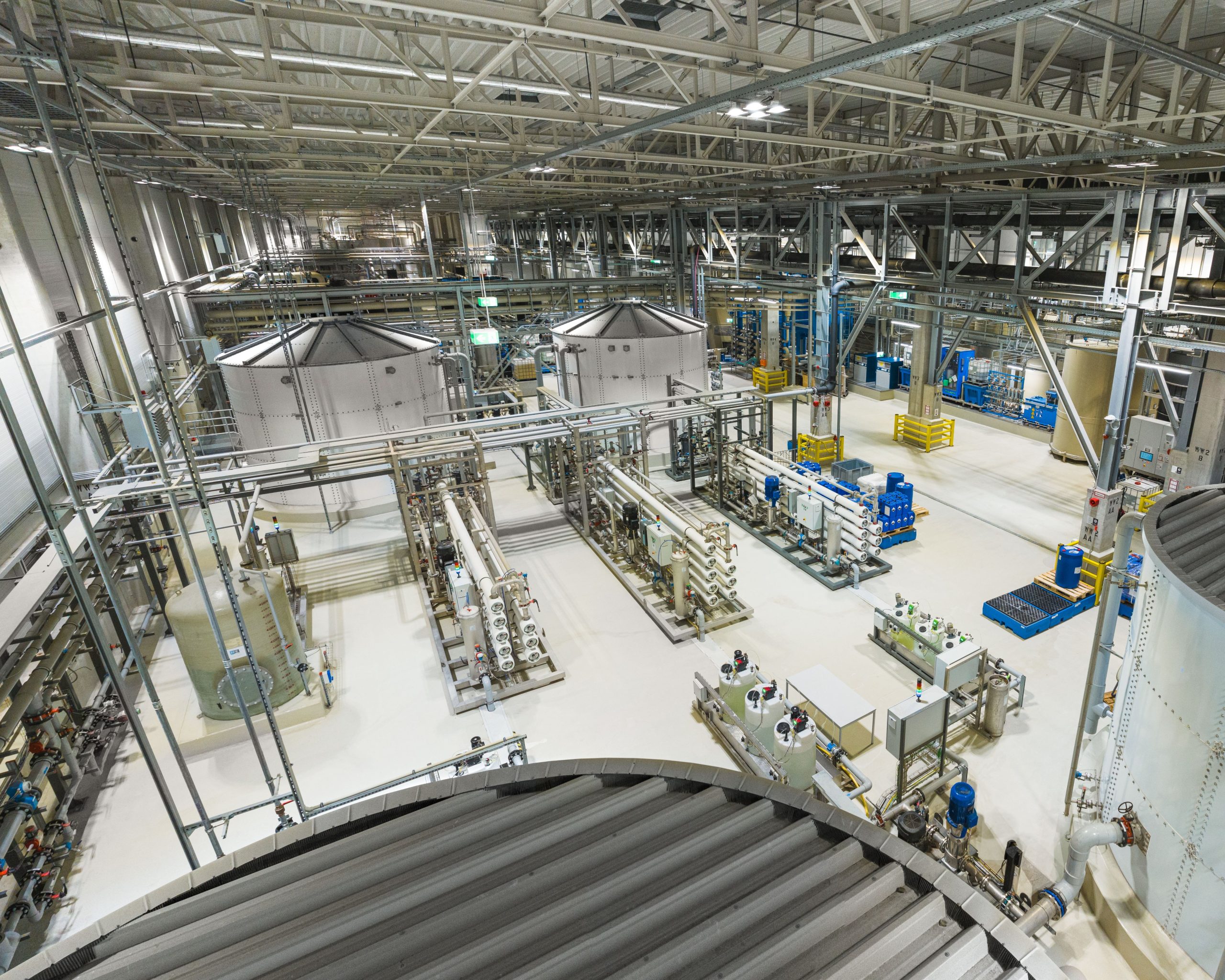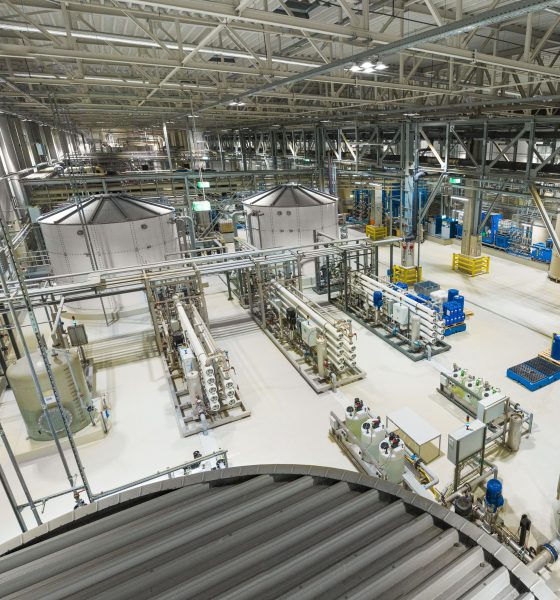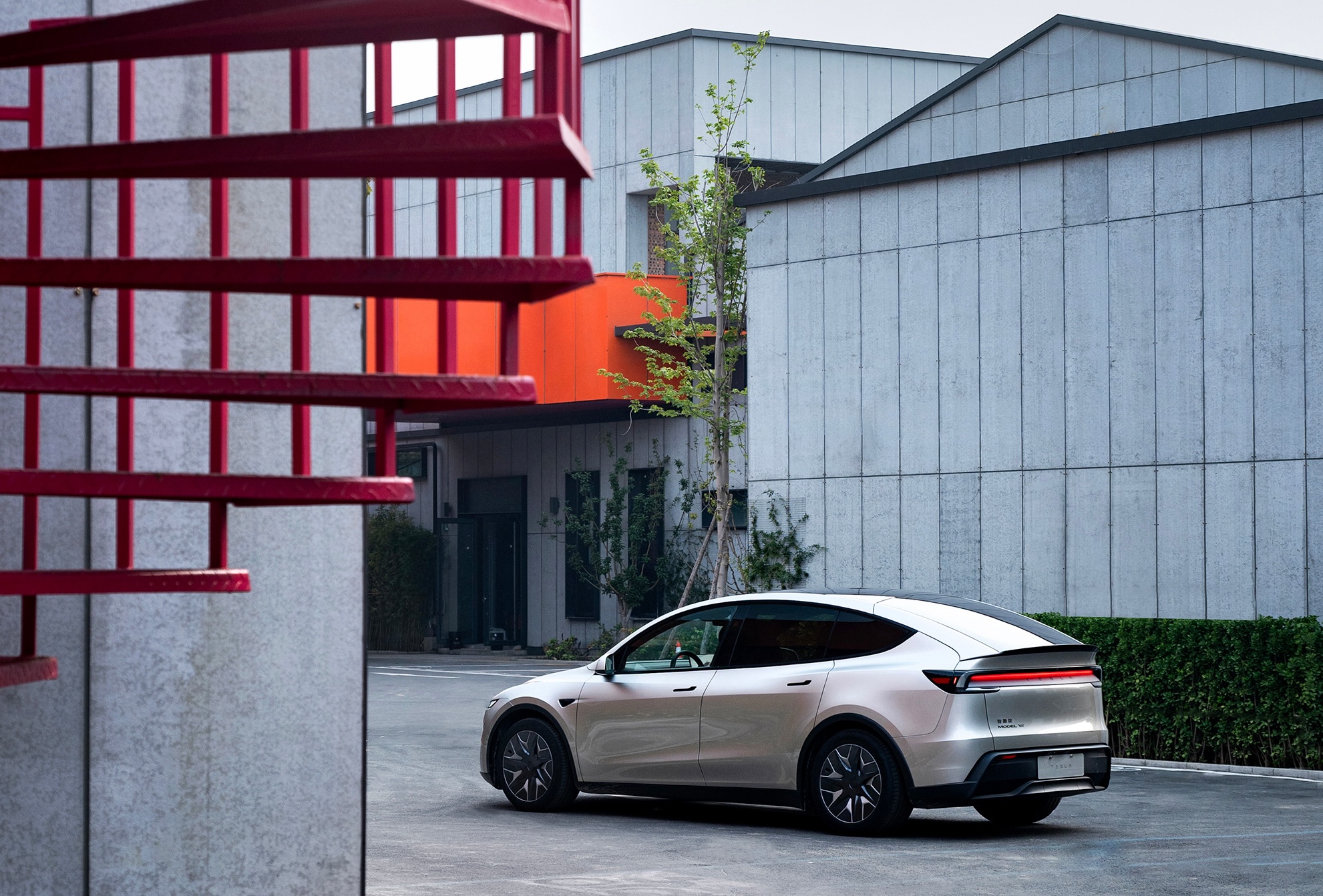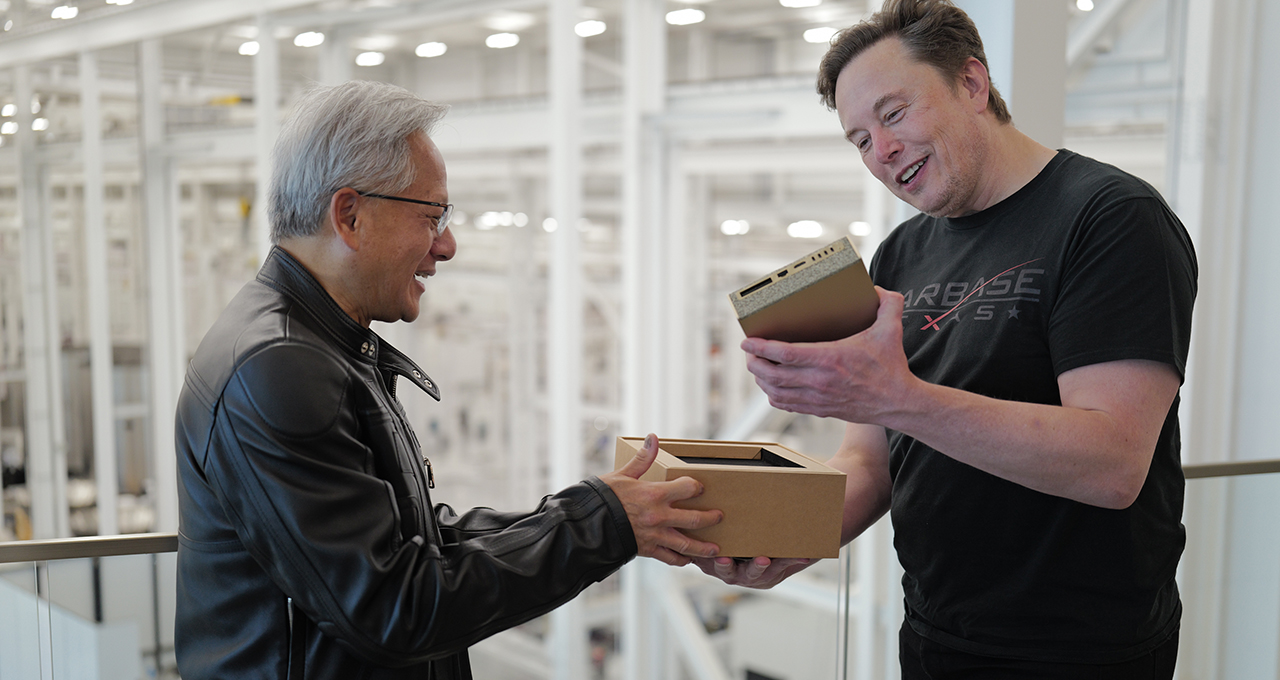

News
Tesla sets the record straight once more about Giga Berlin’s water consumption
Tesla Giga Berlin-Brandenburg is already dubbed as the company’s most sustainable and efficient facility, but it still attracts a consistent stream of opposition. Among the most notable arguments against Giga Berlin is the facility’s water consumption, which critics have alleged is dangerously high. Tesla, for its part, has been doubling down on its efforts to set the record straight about Giga Berlin’s water usage.
In comments to rbb24, Tesla External Projects Lead Theresa Eggler provided an overview of the facility’s water consumption as well as the technologies that the EV maker employs to ensure that the factory could recycle as much water as possible. The Tesla employee highlighted that Giga Berlin recycles almost all of its dirty water from car production. By doing this, Tesla is able to use far less water than originally planned. “We manage to recycle up to 100% of all of our process wastewater here,” she said.
Alexander Riederer, who works at Tesla’s Public Policy & Business Development division, also highlighted that Giga Berlin is one of Germany’s largest wastewater treatment plants. “We have one of the largest industrial wastewater treatment plants in Germany here. There is only one larger one, which is in a nuclear power plant,” he said.
Tesla Giga Berlin is a huge facility, and thus, it was approved to use 1.8 million cubic meters of water per year. However, Tesla currently uses less than 500,000 cubic meters of water annually. A large part of this water consumption is actually just used for the sanitary facilities of Giga Berlin’s 12,500 employees. Thus, despite its large size and current vehicle output, Giga Berlin only uses about 4% of the total water volume of the water association WSE.
“We actually have one of the most efficient automobile factories in the world here in terms of water consumption,” Riederer stated.
While there is a notable amount of noise surrounding Giga Berlin’s water consumption, it is important to note that the facility consumes far less water than other industrial plants in the area. As per the Brandenburg Ministry of the Environment, the Jänschwalde power plant uses 44.9 million cubic meters of water every year, and the waste recycler EEW in Premnitz uses 23 million cubic meters of water annually. Even the Klaistow asparagus farm uses nearly 1.1 million cubic meters of water per year, more than twice the amount of water used by Giga Berlin.
Granted, Giga Berlin is situated in a water protection area. But it should be noted that Mercedes-Benz also operates a factory in Ludwigsfelde that is built in a water protection area. That factory employs 2,000 workers and has an output of about 50,000 Sprinters per year, and it has been operational since the early 1990s. The Mercedes-Benz facility also consumes less than 100,000 cubic meters of water per year. With this in mind, Tesla already uses far less water per vehicle in Giga Berlin, but as per rbb24, the Mercedes-Benz factory has not attracted any protests about its consumption or possible dangers to date.
Don’t hesitate to contact us with news tips. Just send a message to simon@teslarati.com to give us a heads up.

News
Tesla extends FSD Supervised ride-alongs in Europe by three months
Needless to say, it does appear that FSD fever is starting to catch in Europe.

Tesla appears to be doubling down on its European Full Self-Driving (Supervised) push, with the company extending its demo ride-along program by three months until the end of March 2026. The update seems to have been implemented due to overwhelming demand.
Needless to say, it does appear that FSD fever is starting to catch in Europe.
Extended FSD demonstrations
Tesla EU Policy and Business Development Manager Ivan Komušanac shared on LinkedIn that the company is offering ride-along experiences in Germany, France and Italy while working toward FSD (Supervised) approval in Europe.
He noted that this provides a great feedback opportunity from the general public, encouraging participants to record and share their experiences. For those unable to book in December, Komušanac teased more slots as “Christmas presents.”
Tesla watcher Sawyer Merritt highlighted the extension on X, stating that dates now run from December 1, 2025, to March 31, 2026, in multiple cities including Stuttgart-Weinstadt, Frankfurt and Düsseldorf in Germany. This suggests that the FSD ride-along program in Europe has officially been extended until the end of the first quarter of 2026.
Building momentum for European approval
Replies to Merritt’s posts buzzed with excitement, with users like @AuzyMale noting that Cologne and Düsseldorf are already fully booked. This sentiment was echoed by numerous other Tesla enthusiasts on social media. Calls for the program’s expansion to other European territories have also started gaining steam, with some X users suggesting Switzerland and Finland as the next locations for FSD ride-alongs.
Ultimately, the Tesla EU Policy and Business Development Manager’s post aligns with the company’s broader FSD efforts in Europe. As per recent reports, Tesla recently demonstrated FSD’s capabilities for Rome officials. Reporters from media outlets in France and Germany have also published positive reviews of FSD’s capabilities on real-world roads.
News
Tesla’s six-seat extended wheelbase Model Y L sold out for January 2026
Estimated delivery dates for new Tesla Model Y L orders now extend all the way into February 2026.

The Tesla Model Y L seems to be in high demand in China, with estimated delivery dates for new orders now extending all the way into February 2026.
This suggests that the Model Y L has been officially sold out from the rest of 2025 to January 2026.
Model Y L estimated delivery dates
The Model Y L’s updated delivery dates mark an extension from the vehicle’s previous 4-8 week estimated wait time. A detailed chart shared by Tesla data tracker @Tslachan on X shows the progressions of the Model Y L’s estimated delivery dates since its launch earlier this year.
Following its launch in September, the vehicle was given an initial October 2025 estimated delivery date. The wait times for the vehicle were continually updated over the years, until the middle of November, when the Model Y L had an estimated delivery date of 4-8 weeks. This remained until now, when Tesla China simply listed February 2026 as the estimated delivery date for new Model Y L orders.
Model Y demand in China
Tesla Model Y demand in China seems to be very healthy, even beyond the Model Y L. New delivery dates show the company has already sold out its allocation of the all-electric crossover for 2025. The Model Y has been the most popular vehicle in the world in both of the last two years, outpacing incredibly popular vehicles like the Toyota RAV4. In China, the EV market is substantially more saturated, with more competitors than in any other market.
Tesla has been particularly kind to the Chinese market, as it has launched trim levels for the Model Y in the country that are not available anywhere else, such as the Model Y L. Demand has been strong for the Model Y in China, with the vehicle ranking among the country’s top 5 New Energy Vehicles. Interestingly enough, vehicles that beat the Model Y in volume like the BYD Seagull are notably more affordable. Compared to vehicles that are comparably priced, the Model Y remains a strong seller in China.
Elon Musk
NVIDIA CEO Jensen Huang commends Tesla’s Elon Musk for early belief
“And when I announced DGX-1, nobody in the world wanted it. I had no purchase orders, not one. Nobody wanted to buy it. Nobody wanted to be part of it, except for Elon.”

NVIDIA CEO Jensen Huang appeared on the Joe Rogan Experience podcast on Wednesday and commended Tesla CEO Elon Musk for his early belief in what is now the most valuable company in the world.
Huang and Musk are widely regarded as two of the greatest tech entrepreneurs of the modern era, with the two working in conjunction as NVIDIA’s chips are present in Tesla vehicles, particularly utilized for self-driving technology and data collection.
Nvidia CEO Jensen Huang regrets not investing more in Elon Musk’s xAI
Both CEOs defied all odds and created companies from virtually nothing. Musk joined Tesla in the early 2000s before the company had even established any plans to build a vehicle. Jensen created NVIDIA in the booth of a Denny’s restaurant, which has been memorialized with a plaque.
On the JRE episode, Rogan asked about Jensen’s relationship with Elon, to which the NVIDIA CEO said that Musk was there when nobody else was:
“I was lucky because I had known Elon Musk, and I helped him build the first computer for Model 3, the Model S, and when he wanted to start working on an autonomous vehicle. I helped him build the computer that went into the Model S AV system, his full self-driving system. We were basically the FSD computer version 1, and so we were already working together.
And when I announced DGX-1, nobody in the world wanted it. I had no purchase orders, not one. Nobody wanted to buy it. Nobody wanted to be part of it, except for Elon.
He goes ‘You know what, I have a company that could really use this.’ I said, Wow, my first customer. And he goes, it’s an AI company, and it’s a nonprofit and and we could really use one of these supercomputers. I boxed one up, I drove it up to San Francisco, and I delivered it to the Elon in 2016.”
The first DGX-1 AI supercomputer was delivered personally to Musk when he was with OpenAI, which provided crucial early compute power for AI research, accelerating breakthroughs in machine learning that underpin modern tools like ChatGPT.
Tesla’s Nvidia purchases could reach $4 billion this year: Musk
The long-term alliance between NVIDIA and Tesla has driven over $2 trillion in the company’s market value since 2016.








